The year 2024 saw some amazing animated films: Moana 2, Inside Out 2, Kung Fu Panda 4, The Wild Robot, Flow, and more. And while Mufasa: The Lion King is a live-action/VFX production, some may think of it as an animated production since all its characters and environments are computer-generated. The Disney prequel, which takes us back in time to when Mufasa and Taka (who later became known as Scar) first met as youngsters, follows their journey of friendship, family, jealousy, and betrayal. It is a masterful work of art, with artists at MPC creating the film’s photorealistic animals and environments, all of which are, without question, pride-worthy.
In 2019, Moving Picture Company (MPC) showed why its work on The Lion King was groundbreaking, creating an entire cast of compelling CG animals and the film’s accompanying richly detailed settings—miles and miles of it. Although it was all-CG, the imagery appeared photorealistic, albeit with a slight Disney-esque touch—after all, these animals could talk. The CG was cutting-edge and pushed technical boundaries, earning the film 45 various award nominations (including one for best visual effects) and many wins. A crowning achievement, without question.
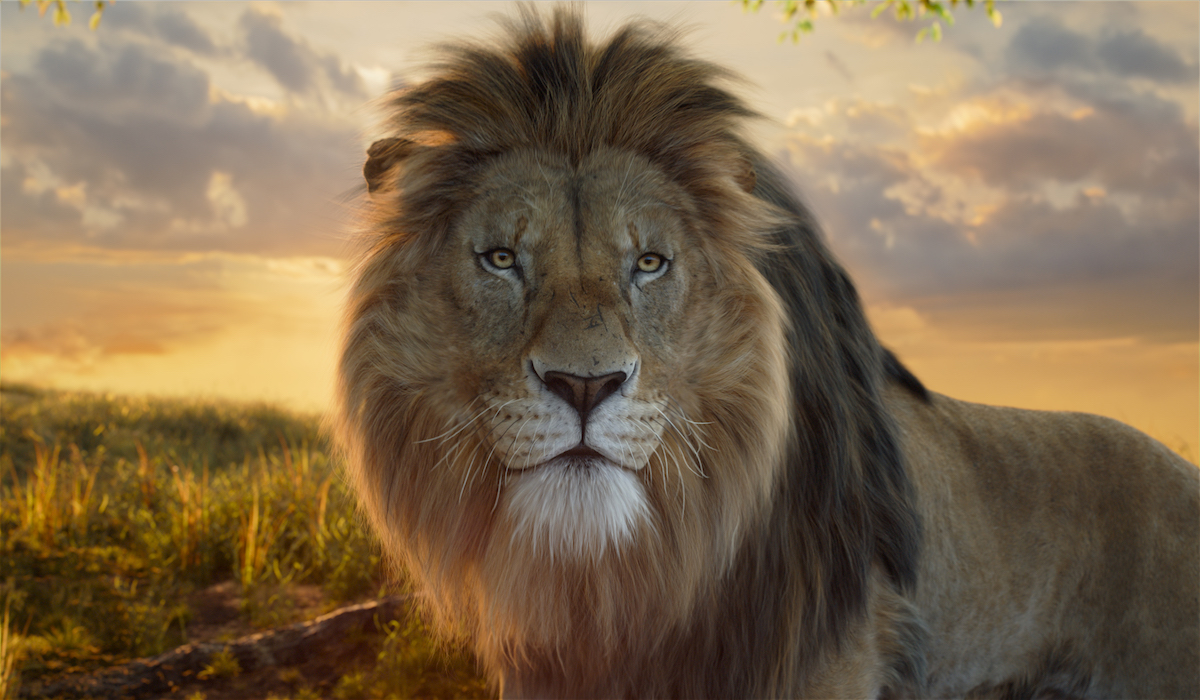
Even before it took on The Lion King, MPC had built a portfolio and reputation for creating a menagerie of realistic digital animals in films such as The Jungle Book, The One and Only Ivan, Cruella, and many, many more over the years. So, when Disney wanted to return to the savannah once again, this time for the prequel Mufasa: The Lion King, who else would be called on to bring the characters, new and cherished alike, and scenery to life for another go?
Mufasa turns back the clock on the original tale, telling the backstory of the two lion brothers, the orphan Mufasa and the prince Taka, united through friendship rather than blood. The film takes us on their life’s journey as Mufasa is accepted into their pride. In time, Taka, becomes jealous and turns on Mufasa and his own pride, siding with a group of outsiders looking for revenge. Mufasa’s eventual heroics earn him the mantle of king, and against advice, he offers Taka a chance at redemption rather than banishment, as Taka takes up a new name that becomes familiar to Lion King fans: Scar.
This sets the stage for the original story of The Lion King, which harkens back to the 2D-animated film of 1994, with a focus on Mufasa’s son, Simba. And it was up to MPC to take audiences on that journey, from the stunning expanses of the African savannah to the meticulously crafted animation of its animal characters, every frame of the film a thing of beauty.
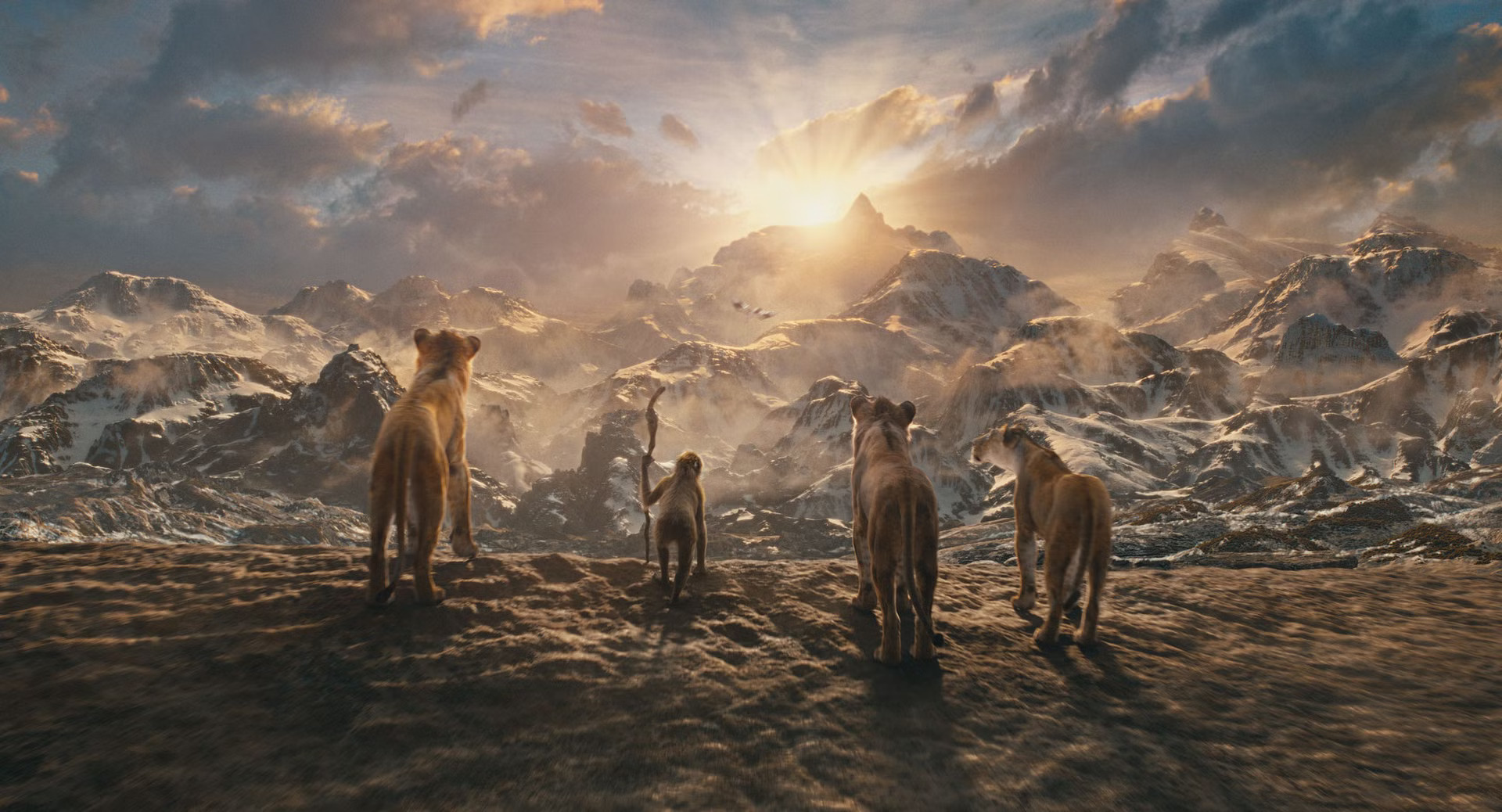
A team of 1,700 artists, technologists, and production crew, located across four continents, collaborated to create a breathtaking visual journey through a world that was entirely CG. The group was headed by Production VFX Supervisor Adam Valdez, Animation Supervisor Daniel Fotheringham, VFX Producer Barry St. John, MPC VFX Supervisor Audrey Ferrara, and VFX Producers Georgie Duncan and Benny Milligan.
In all, MPC delivered 1,500 full-CG shots for the film.
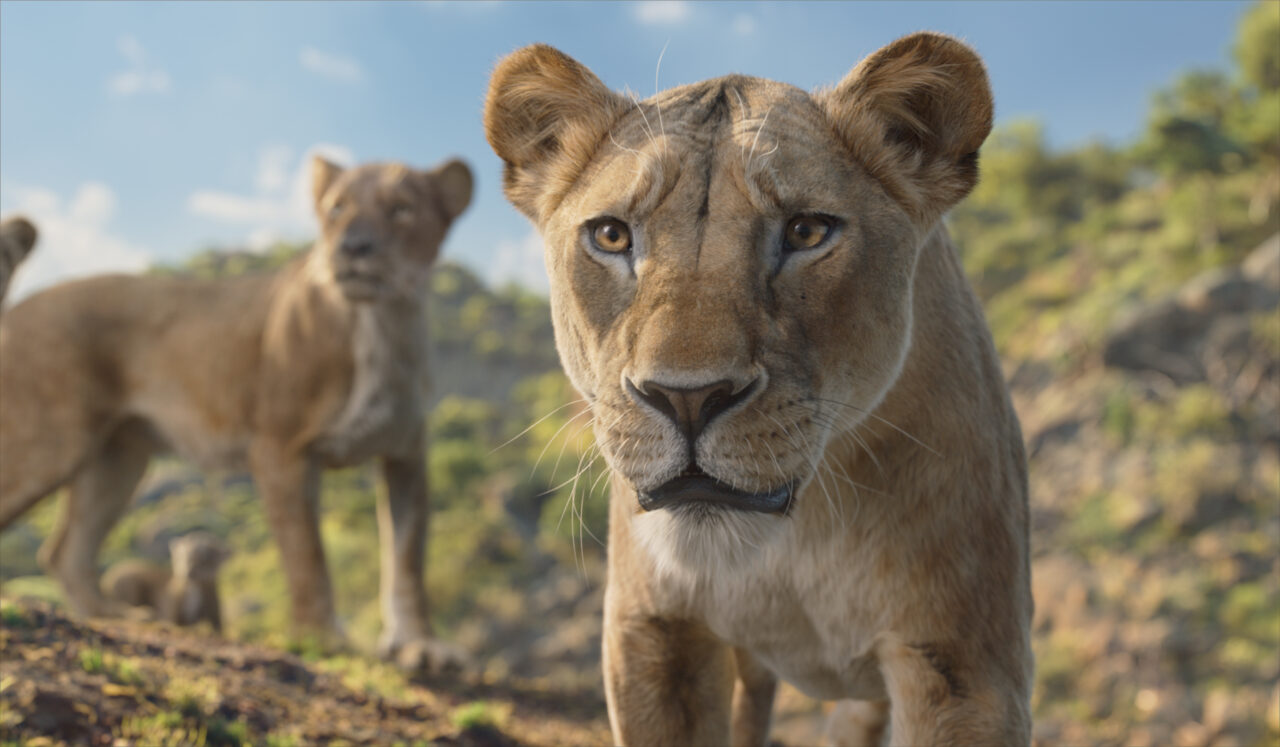
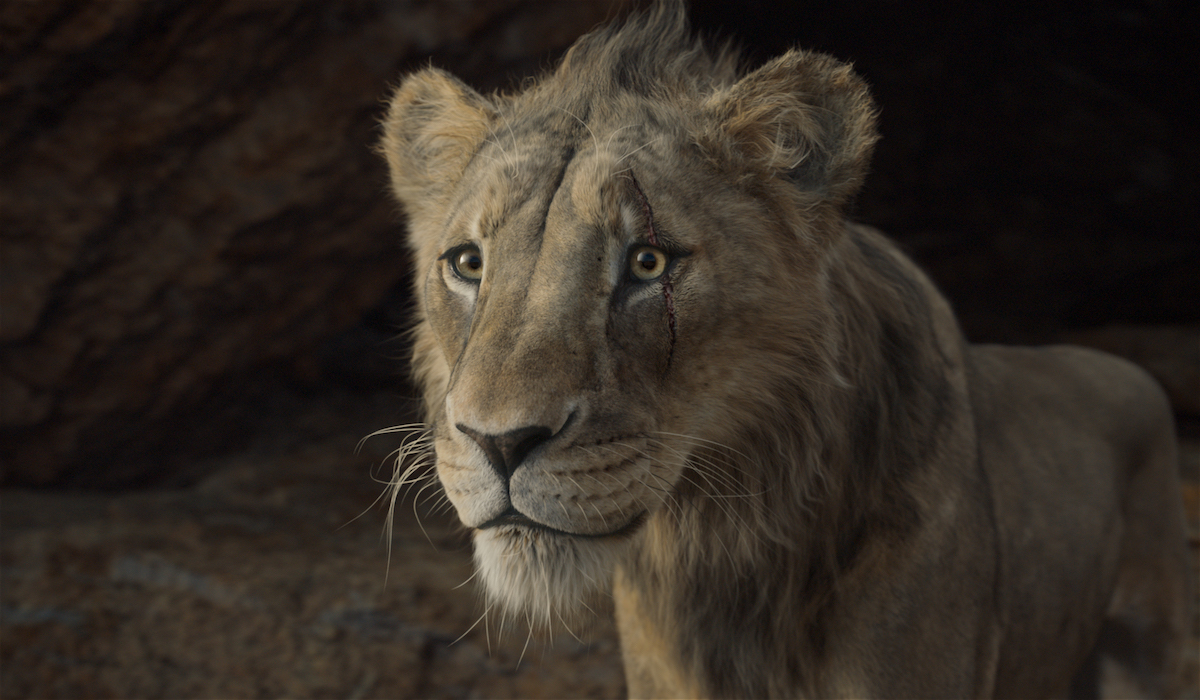
This second go-around pushed MPC far beyond its first experience. The team was motivated to take its work to a new level, leveraging tools and techniques during preproduction, including the use of virtual production and motion capture. And, they were doing so during COVID (in 2020) and the associated restrictions, which meant collaborating remotely from across the pond (London) and across the US (New York and Los Angeles). This was accomplished using VR to navigate the digital environments from the remote locations, navigating the digital spaces like real locations.
As MPC explained, motion-capture performers’ movements were mapped onto digital animals, and using Epic’s Unreal Engine, Director Barry Jenkins viewed real-time animated feeds, enabling him to direct performances live.
Valdez detailed the process, particularly for the lion characters. “To create a blueprint for our final animation, our motion-capture shoot involved multiple performers playing Mufasa, Sarabi, Taka, Rafiki, and even Zazu. They wore motion-capture suits, and through a process we call Quad Cap [a real-time quadrupled mocap system], their movements were mapped onto digital lion characters. This technology aligned the performers’ head and spine movements to the lion’s head and neck, their legs to the lion’s front legs, and simulated the lion’s back legs and hips to follow. Barry [Jenkins] could then watch a live feed of the lions on-screen through Unreal Engine, allowing him to give real-time performance and camera notes to the actors and DP.”

In all, MPC’s Character Lab team crafted nearly 120 photorealistic, unique animals for the film. Each was built from the ground up, starting with anatomically precise bone and muscle structure. MPC’s proprietary grooming system, Loma, was instrumental in creating lifelike fur with an unprecedented number of hairs that could react naturally to environmental elements like snow, wind, and water. Each lion had over 30 million hairs; Mufasa’s mane alone has almost 17 million hair curves. In addition, Mufasa has 600,000 hairs on his ears, 6.2 million hairs on his legs, and 9 million hairs on his body’s midsection.
Simulating these realistic lion manes required 40,000–80,000 dynamic curves per character, with custom presents for different weather and physical conditions. Long shots took up to a week per iteration, with final fur caches exceeding 800GB.
Not only did the characters have to look real, but they had to move realistically as well. In all, there are 1,476 final animation shots in the film. They also had to emote. MPC’s animators provided expressiveness and nuance to the characters, resulting in performances with emotional depth and authenticity. According to a statement from Fotheringham, facial expressions and lip sync were added to enhance characters’ performances. Then, the director could walk through the recorded sequence in VR, making notes before they would wrap that segment up to be shot virtually.
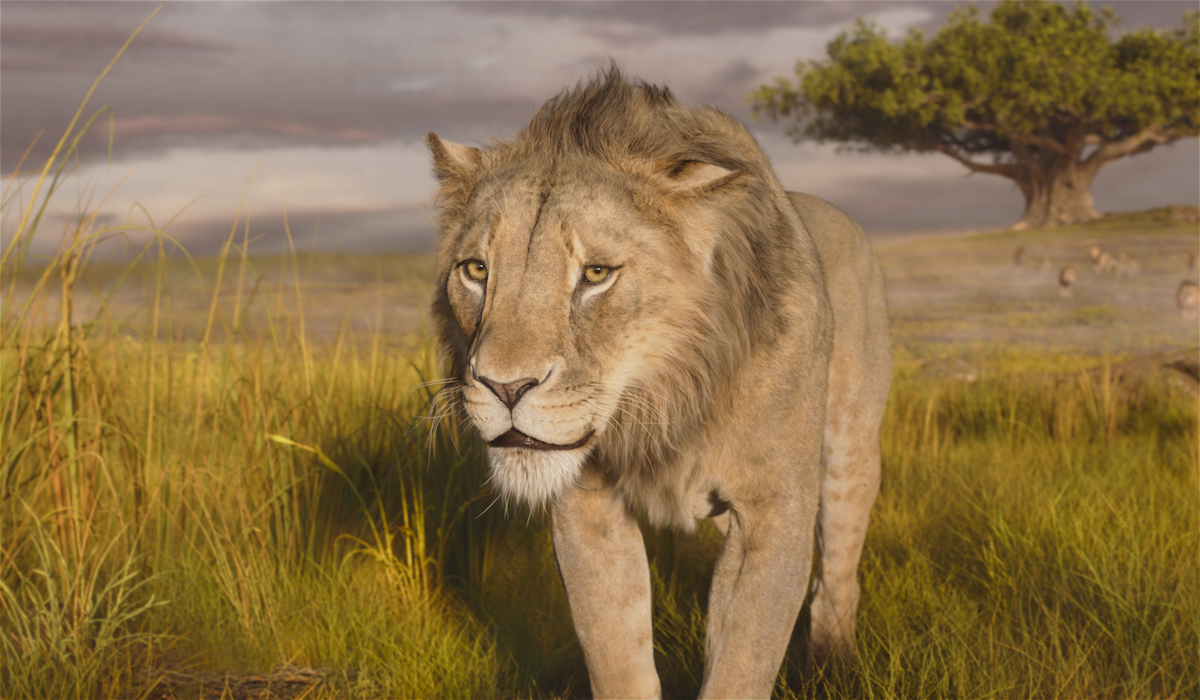
Performances with complex animal mechanics, like fighting or leaping, were then integrated into the Quad Cap performances and into the virtual sets, creating a complete master scene in virtual production that could be scouted, reviewed, and filmed from any angle in VR. This innovative blending of live-action filmmaking techniques and visual effects became a defining feature of the entire production, MPC noted.
When it came to the environments, MPC’s artists redefined worldbuilding, crafting expansive African landscapes through scouting trips, photogrammetry, and hand-sculpting. They meticulously designed plains, canyons, and forests, capturing every detail, from weathered rocks to blades of grass. The artists then built the diverse landscape of plains, forests, and canyons, and filled it with elements crafted using techniques like photogrammetry and hand-sculpting. The artists built a library of 5,790 assets; custom scattering tools were then used to generate a natural look.
MPC enhanced the CG world with simulations of trees, bushes, and plants. Dense grasslands featured 1.5 million-plus animated grass assets, while some shots had up to 25,000 plants reacting to wind or character interaction.
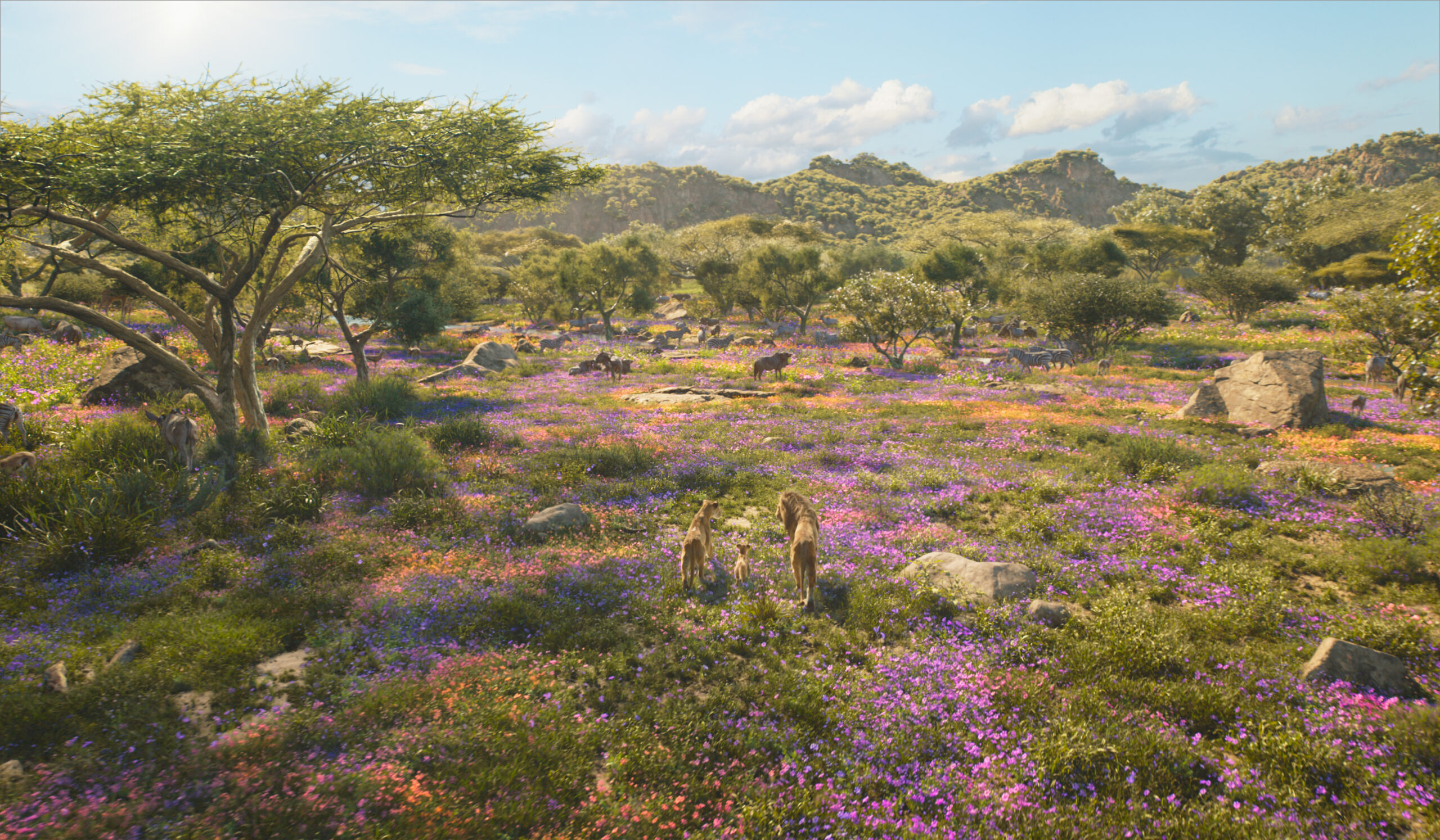
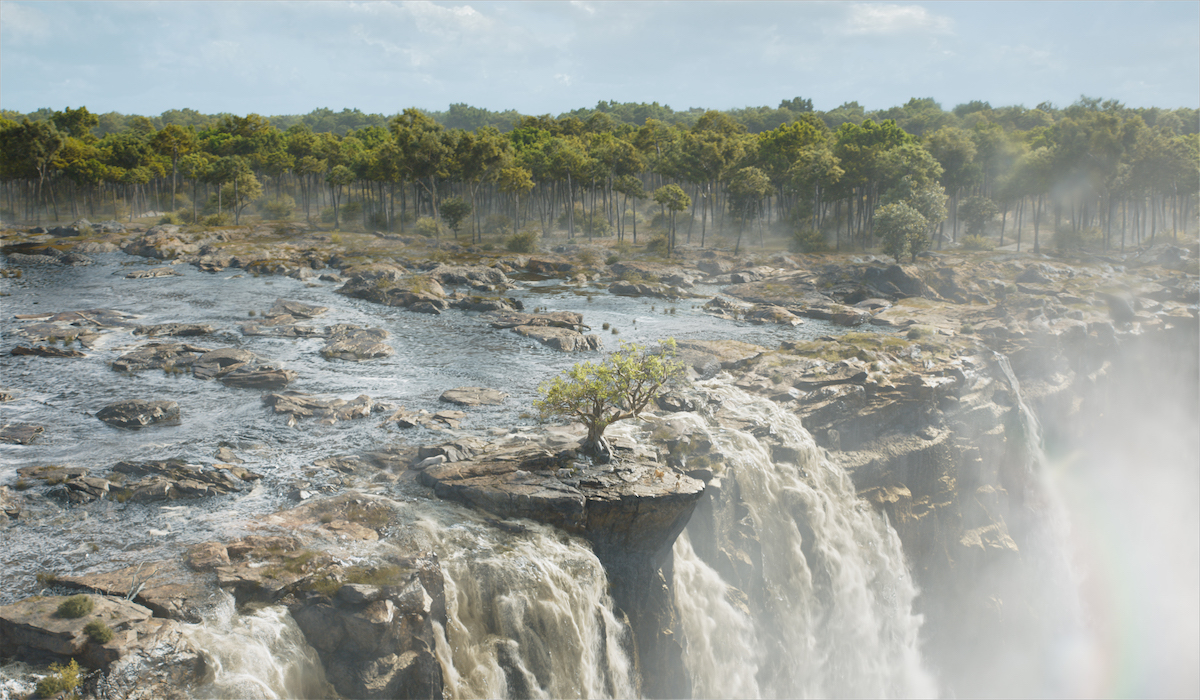
In all, MPC brought to life 77 digital sets, including the iconic Pride Rock and new locations such as Mountains of the Moon and the Tree of Life.
To manage the vast scale, they developed innovative tools, ensuring the landscapes became as integral to the story as the characters. MPC emphasized that optimizing the rendering of the vast environment was a crucial step. Even so, rendering eh film in final quality took 150 million hours, which MPC estimated would take a single computer 17,123 years to complete. The result is a 107-square-mile digital world (about the size of Salt Lake City), rendered with photorealistic detail, that immerses audiences in stunning African vistas.
Without question, a film like Mufasa generated a lot of data. A fact to think about: Storage requirements hit 25PB, the equivalent storage of 5.6 million DVDs, which, if stacked on top of each other, would be four times taller than the Burj Khalifa, the tallest building in the world.
Other interesting numbers and facts provided by MPC include:
12,680—Within Unreal Engine, a total of 12,680 on-stage takes were shot using the VCam and motion-capture systems, all of which produced both a recorded and rendered artifact. If all the captured takes were played one after the other, it would take just under 200 hours, or just over eight days, to watch them all.
7,399—A total of 7,399 live motion-capture and Quad Cap performances were captured throughout the shoot.
2,000—MPC delivered a 10-minute unbroken scene featuring Mufasa, Sarabi, and 2,000-plus Pride Land animals in the third act.
100 million—The FX team simulated an average of 100 million water particles per shot for the flash flood sequence that separates a young Mufasa from his parents.
620 million—One shot of Rafiki making a snow angle required simulating over 620 million snow particles.
The legend of The Lion King is a timeless tale. Starting with the original The Lion King in 1994, there have been eight films based on the franchise, with Mufasa as the most recent. The franchise has been presented from various characters’ points of view and in various formats—2D, 3D, and live action/VFX, not to mention the musical and TV series. Without question, Mufasa is a work of art, thanks to the digital magic of MPC and others who helped bring this story to life.
Mufasa was released in theaters this past December and is expected to stream on Disney+ in March.
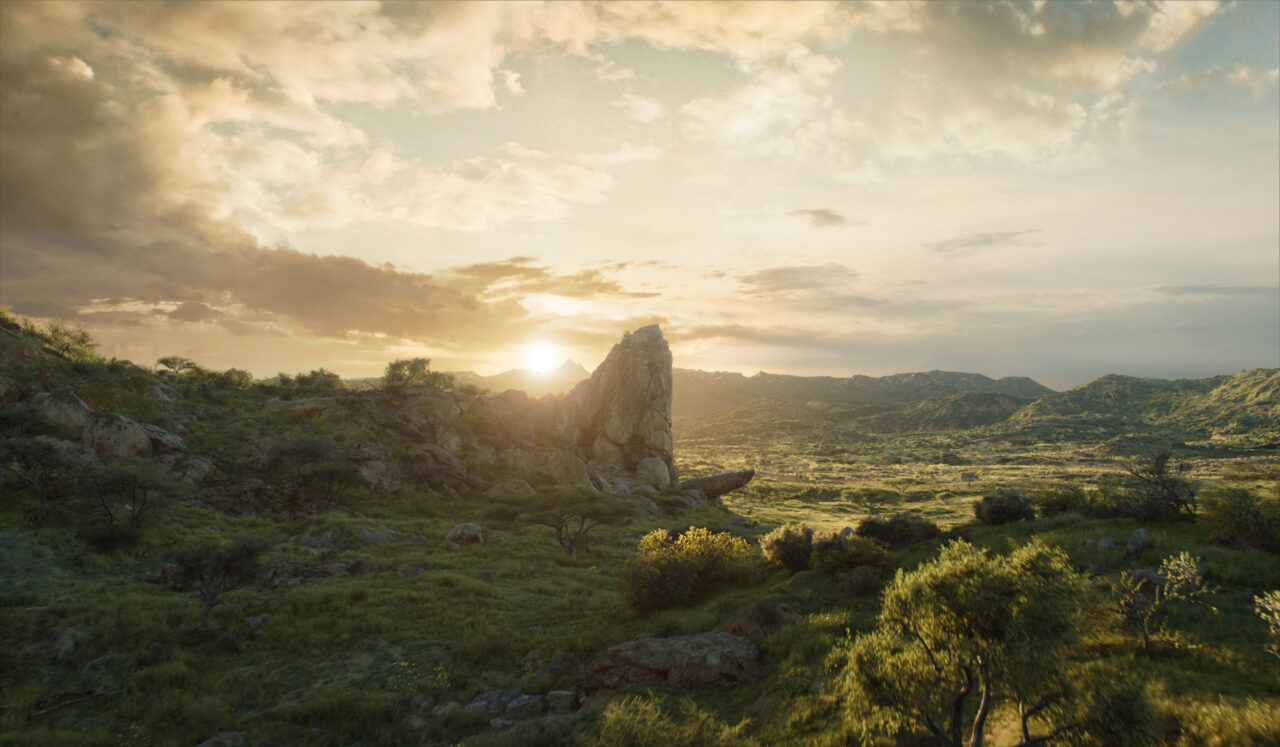
LIKE WHAT YOU’RE READING? INTRODUCE US TO YOUR FRIENDS AND COLLEAGUES.